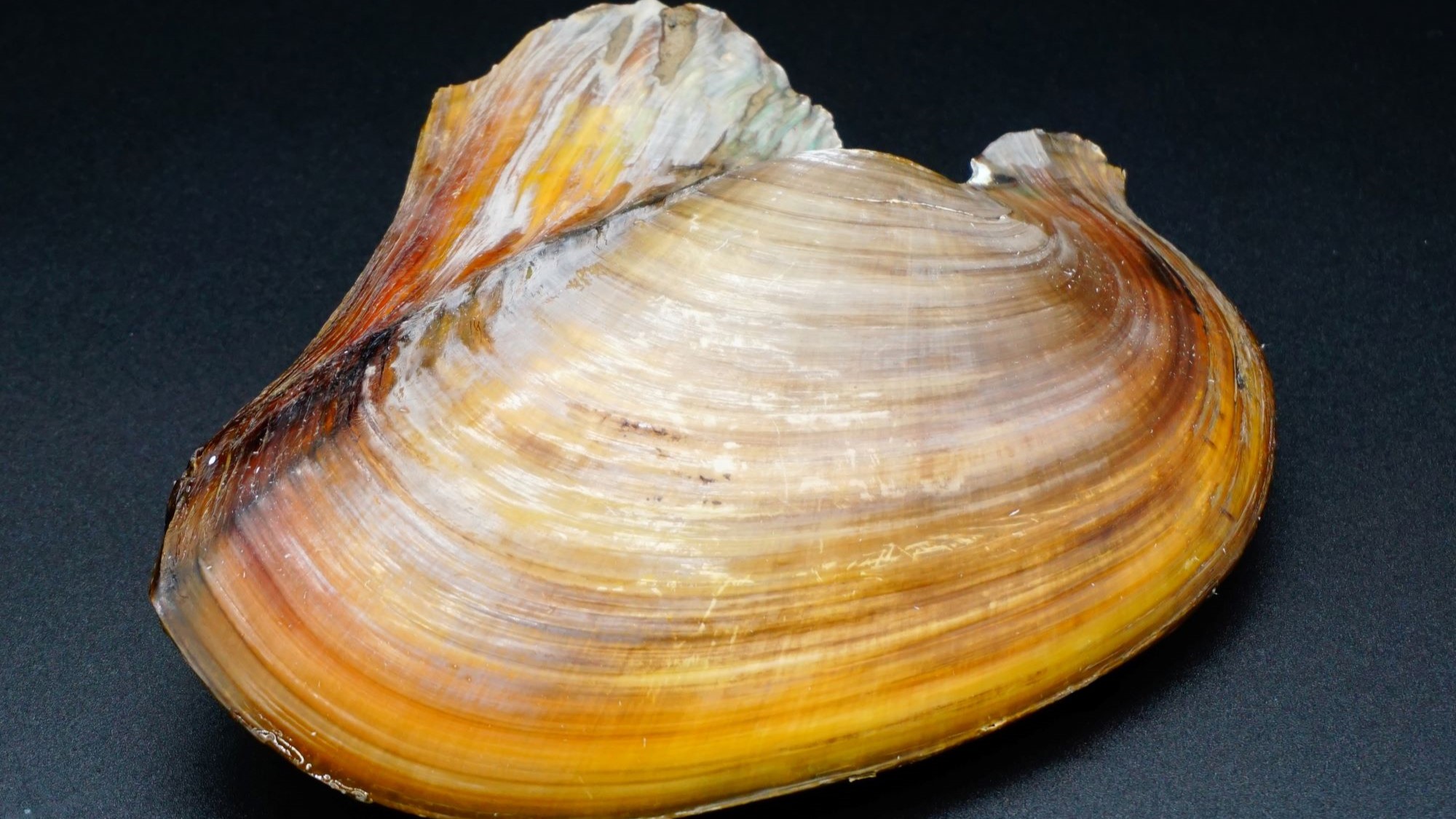

The function of folding phones and handheld game consoles like the Nintendo 3DS hinges on, well, their hinges. Open and shut such gadgets enough times that the hinges start to fail, and you might find yourself wishing for a far better joint.
As it happens, the animal realm may have fulfilled that wish. Sources of inspiration take the form of bivalves: clams, oysters, cockles, mussels, and a whole host of other two-shelled organisms. Over a bivalve’s life, its shells can open and shut hundreds of thousands of times, seemingly without taking damage.
Now, a team of biologists and materials scientists have worked together to examine the case of one particular bivalve, Cristaria plicata, the cockscomb pearl mussel. In their paper, published in the journal Science today, they’ve not only reverse-engineered a mussel’s hinge, they’ve recreated it with glass fibers and other modern materials.
Cockscomb pearl mussels, the study’s starring bivalves, are found in fresh waters across northeast Asia. Ancient Chinese craftspeople grew pearls within this mussel’s shells. By opening the mussel, inserting a small object like a bead or a tiny Buddha inside, closing the animal, and letting it be for a year, they could retrieve the object afterward—now coated in iridescent mother-of-pearl.
Mother-of-pearl, also known as nacre, has long drawn the attention of materials scientists for far more than its beauty. Although nacre is made from a brittle calcium carbonate mineral called aragonite, its structure—aragonite “bricks” glued together by a protein “mortar”—gives the substance incredible strength and resilience.
“A lot of researchers have replicated various aspects of its brick-and-mortar structure to try to create stiff, tough, and strong materials, says Rachel Crane, a biomechanist at the University of California, Davis, who was not an author of the new paper.
[Related: This new material is as strong as steel—but lighter]
In the process of studying nacre, some scientists couldn’t help notice the mussel’s hinge. Despite also being made from the same brittle aragonite, the hinge both bends and stretches without breaking. “This exceptional performance impressed us greatly, and we decided to figure out the underlying reason,” says Shu-Hong Yu, a materials scientist at the University of Science and Technology of China, and one of the paper’s authors.
Biologists had studied hinges and the differences between them to classify bivalve species as early as the 19th century. But they didn’t have the technology to peel apart these living joints’ inner structures. Yu and his colleagues, though, extracted the hinges and examined them under a battery of microscopes and analyzers.
They found that the bivalve’s hinge consists of two key parts. The first is at the hinge’s core: a folding part shaped like a paper fan. The fan’s “ribs” are an array of tiny aragonite wires, shrouded in a soft protein cushion. The second part is a ligament, an elastic layer over the fan’s outer edge.
As the hinge closes, the protein matrix helps keep the wires straight, preventing them from bending and breaking. Meanwhile, the outer ligament absorbs the tension from the hinge unfurling. Together, this configuration makes the hinge particularly hardy.
The authors placed hinges extracted from mussels in a machine that repeatedly forced them open and shut. This tested their prowess under long-term, repeated stress. Even after 1.5 million cycles, the authors found no sign of damage. In other words, if the mussel opened and shut its shells once a minute, every minute, for three years on end, its hinge would stay perfectly functional.
This makes the mussel’s hinge super-resistant to what engineers call “fatigue.” Everything from nuts and bolts to bridge supports builds up wear and tear from repeated use, just as your legs might feel tired if you’ve recently run a marathon. And, just like a pair of exhausted legs, a fatigued part is more likely to fail—with crippling consequences. “The bivalve shell hinge is particularly interesting not only for its fatigue resistance, but also for its ability to bend,” says Crane.
It’s surely tempting to imagine bizarre biopunk doors that open and close on the backs of indefatigable mussel hinges. While that’s almost certainly impractical, the authors believe that these hinges could inspire human-engineered parts that serve our purposes well.
[Related: Recycling one of the planet’s trickiest plastics just got a little easier]
In fact, inspired by the structure they found, Yu and his colleagues fashioned their own hinge from glass fibers embedded like fan ribs in a polymer matrix. They put their artificial hinge to the test, and found that it held up like the genuine, organic article—while other hinges, one with disorganized glass fibers and another with glass spheres, began to break and crack
Yu says that their early effort isn’t meant for regular human use. But it demonstrates that we could create a mussel-like bend if we needed to. For instance, what if a mobile phone designer wants to make a folding touch-screen phone that needs a brittle material like glass?
“The fan-shaped-region-inspired design strategy provides a promising way to address this challenge,” Yu says. His group now plans to examine what those soft proteins do in the hinge.
But evolution and engineering play by different rules. It isn’t necessarily easy to emulate materials that have evolved over millions of years. “The finest-scale patterns in biological structures are often challenging and costly to replicate,” says Crane.
